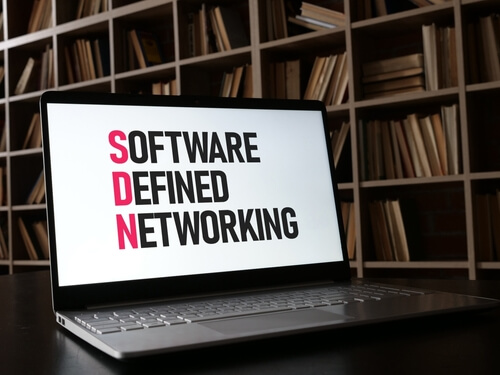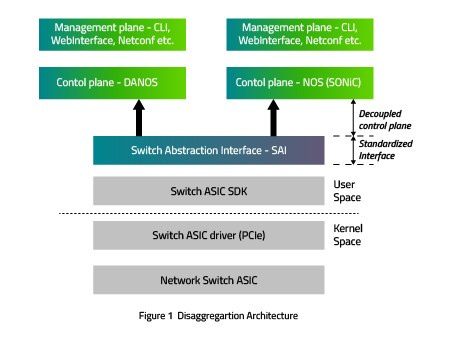Networking is undergoing a sea change — it must to meet the demands of increasingly connected and constantly bandwidth-hungry organizations that realize the window of opportunity for responding to market disruptions is getting becoming smaller by the day. Technology is not viewed by smart customers as a just an enabler. In many cases, especially for organizations that are looking to dominate an existing market or create a completely new one, it’s the trump card. And while the network infrastructure may not be the most exciting aspect of digital, it plays a key role in enabling competitive advantage.
Partners must understand the key drivers that are shaping a new networking reality. I have handpicked four major trends that are important to that understanding.
1. SD-WAN: SDN has made substantial inroads into the enterprise network, propelled by how its affinity with traditional best practices, like decoupling control, helps manage new layers of networking infrastructure. With SDN, the complexity of routing policies and the layers of carriers and circuits are simplified into an intuitive algorithm that is a mix and match of applications, control layers, devices and networks. While the technology is still evolving, it’s seen tremendous success in certain use cases, notably SD-WAN. That’s no surprise given the explosion of Internet-based applications, public cloud services and evolving WAN requirements. A software-defined WAN enables partners to simplify hybrid WAN connectivity, optimize network performance and provide better user experience and more cost-effective solutions for customers.
2. D-NFV for scalability: With users connecting at the speed of light and trillions of gigabytes of data being generated every day, telco/cableco service providers and enterprises have a daunting task ahead of them. Network functions virtualization enables service providers and OEMs to build the more agile, adaptable and efficient networks needed to manage big data by decoupling the network layer from a single box to multiple servers, allowing organizations to scale quickly and more affordably. Overall, NFV promises reduced downtime and high performance of network architecture. NFV has three common deployment models; D-NFV, or distributed NFV, is gaining traction of late thanks to its promise of greater security, faster time to market, lower latency, improved performance and enablement of new business models. By enabling service providers to deploy network functions at far-flung customer premises, D-NFV eases sales of services such as WAN acceleration, QoS, security and more. Partners need to have a plan.
3. IoT and 5G: Remember when users were able to transfer only limited amounts of data due to exorbitant costs and technological limitations? With a drastic increase in the number of “things” connected to the internet, there is a huge hunger for bandwidth. This dramatic flow of connected devices places significant challenges around managing network traffic, minimizing latency and ensuring end-to-end security. For many customers, a dedicated network for IoT may be the answer, but this pressing need may also be addressed by converging IoT with 5G, SDN and NFV technologies. SDN helps to manage or eliminate the overload that IoT devices place on the existing network by enhancing the underlying network infrastructure to dynamically allocate resources. NFV adds a virtualization layer that can help accelerate the time-to-market of new, high-value network services. With the imminent rollout of 5G, we will see more large-scale deployments of such virtualized platforms. Helping customers transition to these new technologies will be crucial in providing a better end-user experience and sustaining long-term loyalty.
4. Open networking: Networks are opening up and for good! With the borders around proprietary systems disappearing and the open-source community working to create an ecosystem for developers and architects, open options are coming online to operate, manage and control networks. SDN and NFV have a robust opensource community dedicated to fostering open network projects. Standards like OpenFlow and OCP and open-source projects like OpenStack, OpenDayLight, ONOS, OPNFV, OpenvSwitch and CORD are widely regarded as important building blocks instrumental in creating open reference platforms around SDN and NFV.
If you think that, as a channel partner, you can ignore open source, you’re wrong.
While these four trends address specific pain points in the networking ecosystem, they are cumulatively generating advantages that are most relevant to enterprise customers today:
- Improved OpEx, reduced CapEx
- Bringing orchestration and automation to the center of the network
- A scalable and seamless network architecture leading to increased efficiencies
- Improved traffic engineering to face the technology disruptions across industries
SDN is going to be a mainstay of the networking present and future, and organizations that go down the path of an open software-defined network stand to benefit tremendously from not having a vendor lock-in. They may also avoid heavy licensing fees and mitigate capital expenditures on hardware, thus allowing them to innovate freely and focus their energies on responding to market opportunities. For partners, SDN opens up many lucrative advisory opportunities.
Organizations that act swiftly in making the switch will stand to benefit immensely by optimizing their network investments and ensuring business agility. The world is opening up and embracing change; it’s time for networking to do the same.

heads the DCT group at Happiest Minds and is responsible for driving strategy, execution, business and technology across the desired market segments. With over 15 years of experience in Networking technologies, Dharmraj’s current areas of interest are SDN and NFV and the co-creation of solutions in this space with OEMs, TEMs, ISVs and ISPs. Dharmraj’s experience includes packet processing on Broadcom, Cavium and other proprietary ASIC and NPU platforms, control stacks from Level 7, GateD, and Nortel Networks proprietary and management plane.







